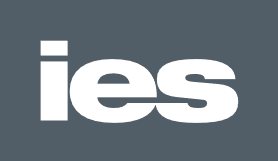The pharmaceutical industry is growing and evolving. Consumer spending on pharmaceutical products in the UK was recorded at £11 billion in 2021, and as we transition from the Covid era, pharmaceutical companies are under pressure to adapt to consumer needs and keep up with manufacturing trends.
Pharmaceutical companies are developing their businesses; whether that be upgrading their manufacturing equipment or undergoing full site relocations to accommodate production demands.
IES is a specialist in the movement of pharmaceutical, biotechnology and life science equipment. We suggest a ‘4P’ approach to moving critical equipment in the pharma sector. In this article, we outline this strategy for making your pharma relocation a success.
1. Provider
Without the right people can you expect the right result?
For the best outcome, use an end-to-end service provider to ensure a seamless and successful relocation.
End-to-end solutions mean that the entire equipment movement process will be taken care of. From rigging and relocation to project management; an end-to-end service provider can take care of every possible option, allowing you to focus on other areas of your business. The alternative of opting for multiple providers can cause communication issues, with the risk that critical information can be missed or lost in translation. Choosing a single-source provider, rather than dealing with several suppliers, can also help you to consolidate costs.
2. Planning
Plan your work and work your plan.
We create detailed planning documents for every move, detailing the procedures, resources and packing requirements required. Our complex laboratory move for Pirbright Institute is an example of how important planning is to the pharmaceutical relocation process.
Another key area of planning is machinery movement insurance. Your options for coverage should be clearly communicated to you by your relocation provider. To mitigate any unwanted disputes and fees, check whether the insurance that you currently use has no hidden downfalls.
Scheduling your relocation will be key to minimising downtime and maximising operational efficiency. Your relocation provider should work alongside you to plan the best time for your move, operating outside standard production hours when necessary.
Read our blog on 6 Things to Consider When Planning an Equipment Relocation Project to learn more about our planning processes.
3. Preparation
Every successful move can be credited to successful preparation.
Working with a provider that possesses years of experience can ensure that a project is perfectly executed. Identifying and mitigating risks that present themselves during the stages of decommissioning, rigging, transport and installation is critical. Failure with any of these elements can result in damaged equipment, spiralling costs and legal complications.
At IES, we scrutinise each method and material used in a move, ensuring that it provides the protection necessary for the equipment. For example, we use data from independently conducted tests to assess packaging materials, examining resistance and robustness, before identifying the very best solution.
4. Post-move
An equipment move project doesn’t end with the move.
Once the moving of critical pharmaceutical equipment has been completed, it’s time for the installation process and Compliance Testing.
Whether you’re an OEM or SME looking to install cleanroom or lab equipment, we can handle the installation and hook-up processes. Through the correct implementation of our earlier ‘P’ for planning, our trained engineers will be aware of all the facilities that are needed for the equipment; whether that be electrical, compressed air or hydraulic.
No installation is complete without Compliance Testing. We offer testing services for UKCA Marking (for equipment in the United Kingdom) and CE Marking (for equipment in Europe).
Our consultants support you every step of the way, ensuring that your equipment meets the requirements of the Machinery Directive, Low Voltage Directive and Electromagnetic Compatibility Directive.
IES has supported companies such as GE Healthcare, Abbott Labs, Catalent and Corning Life Sciences with their pharmaceutical equipment moves. Learn more about our relocation services for the pharmaceutical industry, or contact us today.





